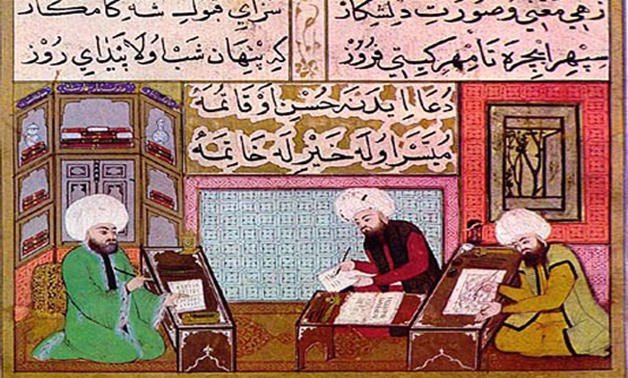Educational institutions in Sadr-e-Islam and their performance in the light of Islamic teachings (Critical review)
Keywords:
Maktab, Madrasa, Early Islam, Education, Ethics, Social ImpactAbstract
The early Islamic period witnessed the emergence of training institutions such as maktabs and madrasas, which played a pivotal role in shaping the intellectual, moral, and social fabric of the Muslim community. Rooted in the teachings of the Quran and Sunnah, these institutions were more than centers of religious instruction; they were comprehensive learning environments that emphasized both spiritual and worldly knowledge. Education was inclusive and accessible, extending to men and women alike, as well as to individuals across different social classes, including slaves. This progressive approach laid the groundwork for a more equitable and enlightened society. The curriculum in these institutions encompassed a wide array of subjects, including theology, jurisprudence, science, mathematics, and philosophy. Teachers were often scholars of high moral standing, reinforcing not only academic but also ethical development in their students. These institutions encouraged critical thinking, intellectual debate, and the pursuit of knowledge as a form of worship, aligning with the Islamic view that seeking knowledge is a sacred duty. Their role extended beyond the academic sphere, fostering civic responsibility and social cohesion. This review critically evaluates the structure, inclusivity, and long-term impact of maktabs and madrasas in early Islamic society. It highlights their contribution to knowledge dissemination, moral education, and the development of a socially responsible Muslim identity. The enduring influence of these institutions is evident in the continued reverence for education in Muslim societies and their historical contributions to global intellectual traditions.
Downloads
References
References
1. Ibn Manẓūr, J. al-D. M. b. M. al-Afrīqī. (1955). Lisān al-ʿArab (1312 AH ed.). Ṣādir.
2. Ibid., p. 548.
3. Rāghib al-Iṣfahānī. (1991). Mufradāt al-Qurʾān (Vol. 2, p. 157). Al-Maktabah al-Murtaḍawiyyah.
4. Ibid., Vol. 1, p. 397.
5. Al-Qur’ān, Sūrat al-Isrāʾ [17:24].
6. Faḍl Rabbī, Dr. (2014). Darsgāh Ṣuffah kā niẓām-i-taʿlīm o tarbiyat. Zāwiyah Publishers.
7. Nuʿmānī, Sh. (1933). Sīrat al-Nabī (Vol. 1, p. 217). Maktabah Islāmiyyah.
8. Ibid., p. 221.
9. Haykal, M. Ḥ. (1990). Abū Bakr al-Ṣiddīq. Dār al-Turāth.
10. Ibid.
11. Ibid.
12. Ibn al-Jawzī, J. al-D. Abū al-Faraj. (1979). Ṣifat al-ṣafwah (Vol. 1, p. 191). Dār al-Maʿrifah.
13. Abū ʿĀṣim, A. b. ʿAmr b. Muḥammad. (1978). Al-Awāʾil (p. 222). Al-Maktab al-Islāmī.
14. Sanāwī, ʿA. (2004). Wuzarāʾ ḥawla al-Rasūl ﷺ. Dār al-Salām.
15. Nuʿmānī, Sh. (1933). Sīrat al-Nabī (Vol. 1, pp. 240–241). Maktabah Islāmiyyah.
16. Ibn ʿUqbah, A. b. M. b. W. (n.d.). Akhbār Makkah (Vol. 2, p. 210). Dār al-Andalus.
17. Ibn Saʿd, M. b. Manīʿ. (1969). Al-Ṭabaqāt al-kubrā (Vol. 1, p. 225). Dār Ṣādir.
18. Balādhurī, A. b. Yaḥyā b. J. (2010). Futūḥ al-buldān (p. 459). Takhliqāt.
19. Ibn Saʿd, M. b. Manīʿ. (1969). Al-Ṭabaqāt al-kubrā (Vol. 1, p. 227). Dār Ṣādir.
20. Balādhurī, A. b. Yaḥyā b. J. (2010). Futūḥ al-buldān (p. 151). Takhliqāt.
21. Ibn Hishām. (n.d.). Al-Sīrah al-nabawiyyah (p. 244).
22. Al-Bukhārī, M. b. Ismāʿīl. (n.d.). Ṣaḥīḥ al-Bukhārī, Kitāb Manāqib al-Anṣār, Ḥadīth No. 3932. Faṣīl International.
23. Ibn Hishām. (n.d.). Al-Sīrah al-nabawiyyah (p. 244).
24. Abū Khalīl, Sh. (n.d.). Futūḥ al-buldān (p. 28).
25. Ibid., p. 24.
26. Bukhārī, S. ʿA. (2010). ʿAhd Banū Umayyah mein muḥaddithīn kī khidmāt (p. 234). Lahore.
27. Al-Bukhārī, M. b. Ismāʿīl. (n.d.). Ṣaḥīḥ al-Bukhārī (Vol. 1, Bāb 63, p. 101).
28. Mubārakpūrī, A. (2000). Khayr al-qurūn kī darsgāhēin aur un kā niẓām-i-taʿlīm o tarbiyat (p. 109). Idārah Islāmiyyāt.
29. Abū Ḥātim al-Rāzī. (2015). Jarḥ wa taʿdīl (p. 8). Dār al-Qalam.
30. Mubārakpūrī, A. (2000). Khayr al-qurūn kī darsgāhēin (p. 111). Idārah Islāmiyyāt.
31. Ibn Saʿd, M. b. Manīʿ. (1969). Al-Ṭabaqāt al-kubrā (Vol. 2, p. 360). Dār Ṣādir.
32. Al-Dhahabī, S. al-D. M. b. A. b. ʿU. (n.d.). Siyar aʿlām al-nubalāʾ (Vol. 2, p. 611). Dār al-Ḥadīth.
33. Al-Samʿānī, A. b. M. Abū Saʿd. (n.d.). Adab al-īmāʾ wa al-istimlāʾ (Vol. 2, p. 512). Al-Maktabah Faqīh.
34. Ibn Saʿd, M. b. Manīʿ. (1969). Al-Ṭabaqāt al-kubrā (Vol. 1, p. 186). Dār Ṣādir.
35. Ibn Mājah, M. b. Yazīd. (n.d.). Sunan Ibn Mājah, Kitāb al-Sunnah, Bāb Faḍl al-ʿUlamāʾ, Ḥadīth No. 221. Dār Iḥyāʾ al-Kutub al-ʿArabiyyah.
36. Yūsuf b. ʿAbdallāh b. Muḥammad. (n.d.). Jāmiʿ al-bayān fī al-ʿilm (Vol. 2, p. 50).
37. Yūsuf b. ʿAbdallāh b. Muḥammad. (n.d.). Jāmiʿ al-bayān fī al-ʿilm (p. 51).
38. Aʿẓamī, Abū al-Ḥasan. (1989). ʿIlm al-qirāʾāt aur qurrāʾ sabʿah (p. 95). Idārah Islāmiyyāt.
39. Salīm, S. M. (2001). Tārīkh-i khaṭṭ o khaṭṭāṭīn (p. 63). Zawār Academy Publications.
40. Ibn Ḥajar al-ʿAsqalānī, A. b. ʿAlī. (n.d.). Al-Iṣābah fī tamyīz al-ṣaḥābah (Vol. 1, p. 223).
41. Ibid.

Downloads
Published
Issue
Section
License
Copyright (c) 2025 Lubna Ameen Khan (Author)

This work is licensed under a Creative Commons Attribution-NonCommercial 4.0 International License.




